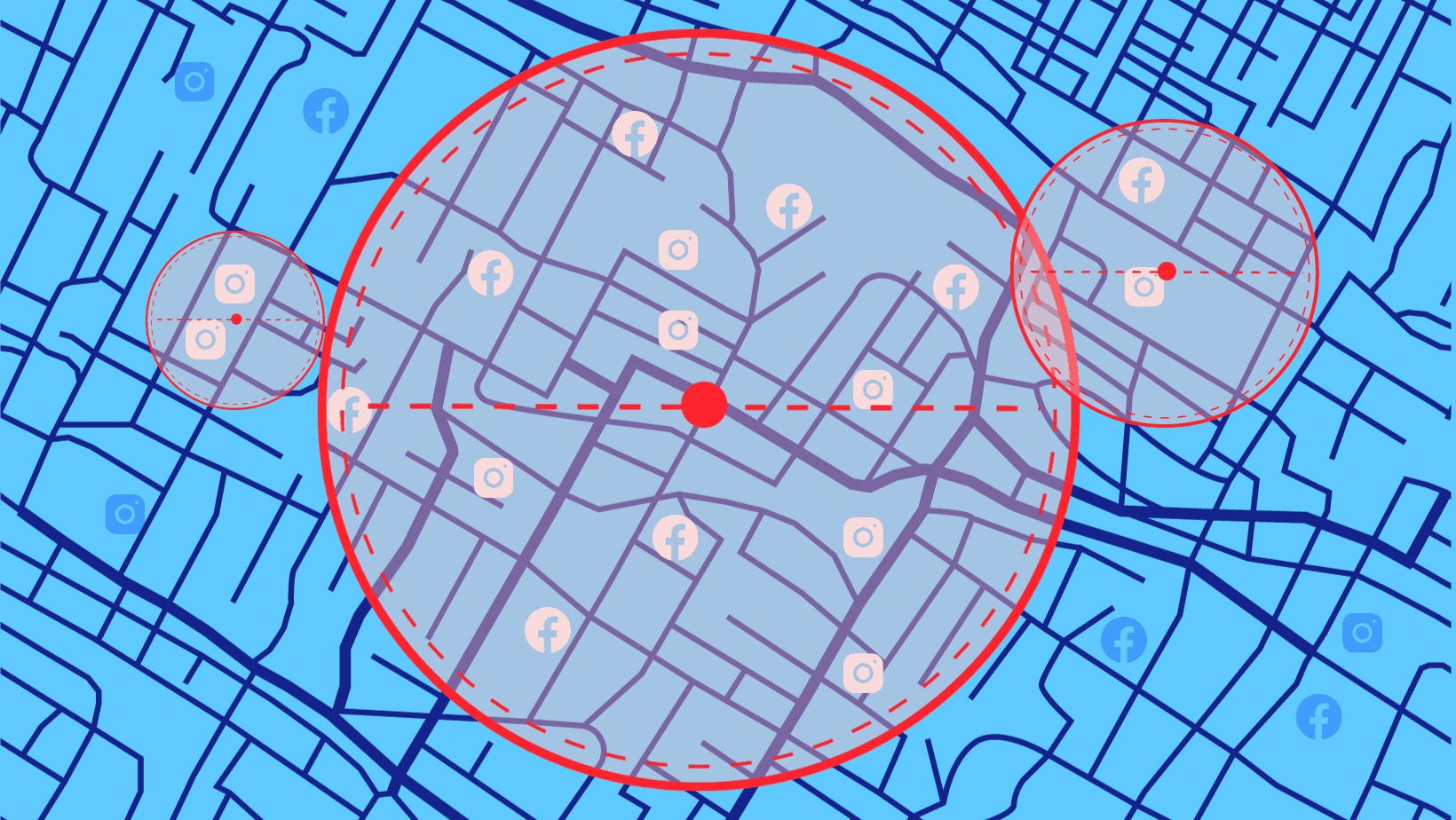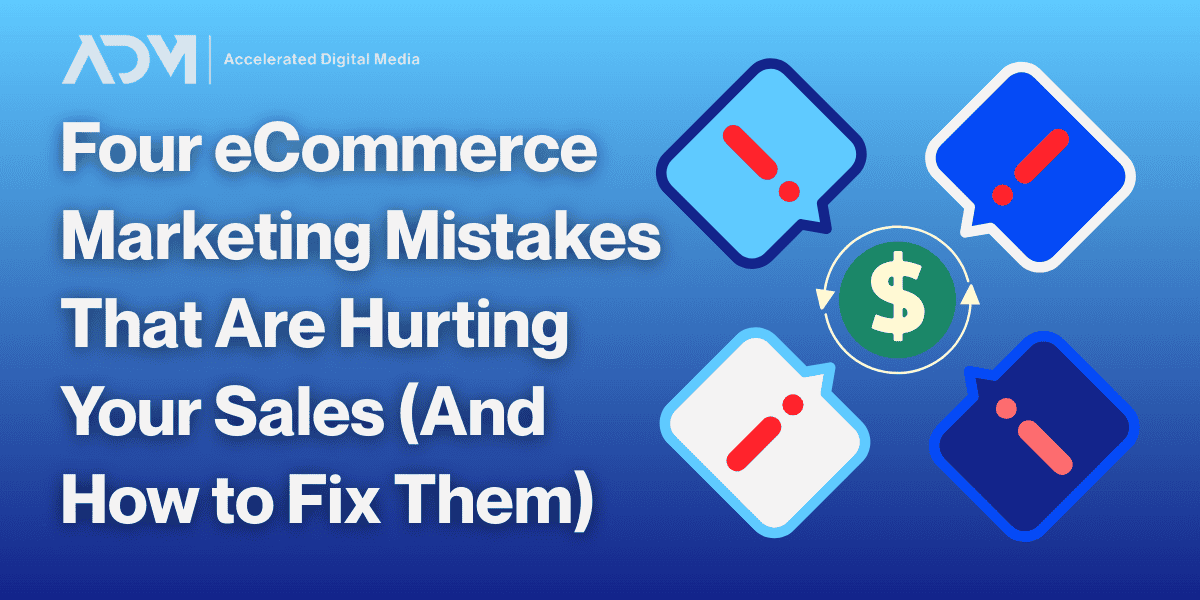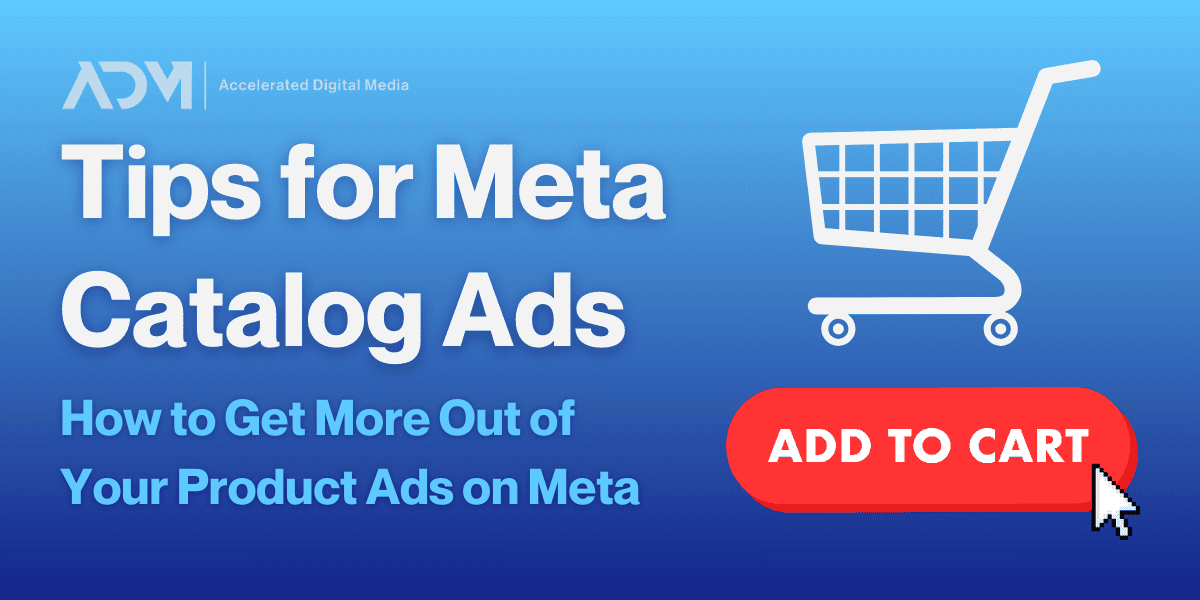For brick-and-mortar businesses like clinics and retail chains, it’s essential to find ways to use digital marketing to grow in-person visits or sales. Meta’s Facebook and Instagram offer robust tools, including an effective targeting algorithm and specific radius and zip code targeting, to reach local audiences and achieve specific goals. In this blog, we will explore the top 10 tips for leveraging Meta advertising to effectively promote foot traffic. Read on to learn how you can use the most powerful platform in social advertising to get more people through the door.
1. Cast a Wide Enough Net with Your Targeting
Narrow geotargeting can be hugely beneficial for local businesses—it ensures your ads aren’t shown to people who live too far away to become regular customers. However, it’s important to balance narrow geotargeting with broad interest and demographic targeting so your audience is large enough to serve. When targeting a specific location, it’s best to target all relevant demographics and leave interests out of the equation unless absolutely necessary.
2. Speak to Your Target Audience with Your Copy and Creative
Copy and creative are key tools for reaching your core audience. Design ads that appeal to your most viable prospects, and let Meta’s algorithm find them via machine learning. Your ads don’t need to be fancy or overwrought—just tap into what you know matters to your customers and speak to it. Whether you’re using video or image ads, the most effective messaging makes users pause and stay engaged. Make sure you get the point across with an attention-grabbing graphic, thumb-stopping video hook, or thought-provoking copy.
3. Provide Value to Build Trust
When your business relies on foot traffic, it’s essential to establish a brand and build trust with potential customers. Focus on showing, not telling prospects why they should choose your business over competitors. Blog posts and vlog-style videos are an effective way to connect with your target audience. Meet them where they are and engage with them in a way that feels familiar and unlike a sales pitch. Over time and with consistent touchpoints, this type of messaging will keep your business top of mind for potential customers.
4. Use Offers to Draw in Foot Traffic (When Applicable)
Strategically utilizing enticing offers can serve as a tool to drive foot traffic to a brick-and-mortar location. By incorporating deals into ad campaigns you can capture more attention with your ads. Offers help your ads stand out against competitors and when positioned correctly are a great tool to drive urgency. When viewers feel like they are getting a deal, especially a limited-time offer, they are more likely to take the desired action of visiting your location in person. Offers are a great tool to bridge the offline to the in-person gap.
5. Conduct Frequent and Strategic Testing
No advertising strategy is perfect upon launch. You’ll need to test different approaches in order to determine what works best for your business. This can be done at all levels of your campaign—from targeting to ad creative. Consider testing different radius targeting options, like 5 miles versus 10 miles from your business, or multiple ad headlines. Gain some learnings and adapt your strategy to fit what you learn. Remember to stick with one test at a time so it’s clear exactly which variable had an impact on the results.
6. Keep an Eye on Frequency
Frequency is a not-so-obvious KPI, but an extremely important one when it comes to building brand awareness. This value represents the average number of times the same user is seeing your ads. It’s important to maintain a balanced frequency—if it’s too low, you may sacrifice brand recall; if it’s too high, you may not be reaching a sizable portion of your target audience. For more control over the reach and frequency of your ads, you can set a frequency cap, which limits the number of times your ads may be served to the same user in a given time period. One of the most commonly used frequency caps is 2x per week, but it can be set to whatever works best for your business. Note that frequency caps are only able to be set in auction campaigns with an awareness objective, or as part of a reach and frequency buy.
7. Be Specific in Your Retargeting
Especially in the internet era, it’s rare for one ad impression to lead to a store visit. This is where retargeting comes into play. Use the Meta pixel and Meta’s custom audience capabilities to create audiences of website visitors, social engagers, or even email subscribers. Target these audiences in a separate ad set or campaign with ads designed specifically for them. Build trust and positive brand sentiment with your prospects, and you’ll see them in person before you know it.
8. Know Your Local Market Inside and Out
Traveling to a new brick-and-mortar location can be daunting, even for the most in-the-know locals. Make it as easy as possible for new customers to make the journey by speaking their language. If your business is located in a neighborhood that residents call by name, use it in your ads! If your location is part of a shopping mall, include the plaza name instead of just the street address. Name some landmarks, like major roads or parks, if your storefront can be a little hard to find. Sure, almost everyone has GPS these days, but a little extra direction is always helpful.
9. Drive Urgency
Overcome the “I’ve been meaning to try that place!” hurdle by adding a bit of urgency to your ad copy, creative, or offer. Evergreen offers have their own appeal, but a limited-time deal is sure to get people out their doors and into yours. If an offer isn’t doable, encourage prospects to “stop in today,” or tell them, “see you soon!” You can even create urgency based on the time of year with angles like preparing for season changes, back-to-school, or other seasonal events. The sooner a prospect arrives at your storefront, the sooner you can convert them into a regular.
10. Leverage the Meta Verified Program
The Meta Verified program boosts online presence and credibility for businesses. Being acknowledged as authentic by Meta may enhance trust and provides a competitive edge. Exclusive features improve visibility and engagement while protecting against impersonation. Upon launch in 2023, the pricing stands at $21.99/month for a Facebook page or an Instagram profile, and $34.99/month for both. It may be worthwhile to investigate whether this investment would bring value to your growth efforts.
Facebook advertising offers a remarkable chance for local businesses to boost foot traffic and enhance sales. If you’re keen on discovering how to align your digital strategy with your in-person goals, connect with ADM. We’ll gladly offer you invaluable insights on maximizing the success of your local Meta ads. And if you’re looking for tips on using SEM to garner more store visits, check out our blog on the 5 keys to crafting a Google Ads location strategy for in-person business.




